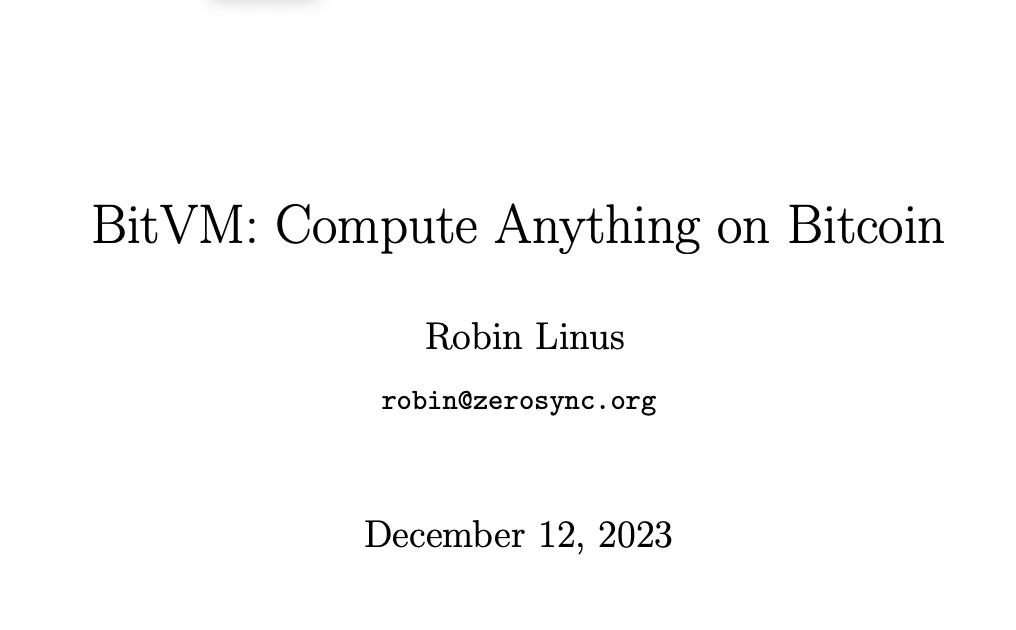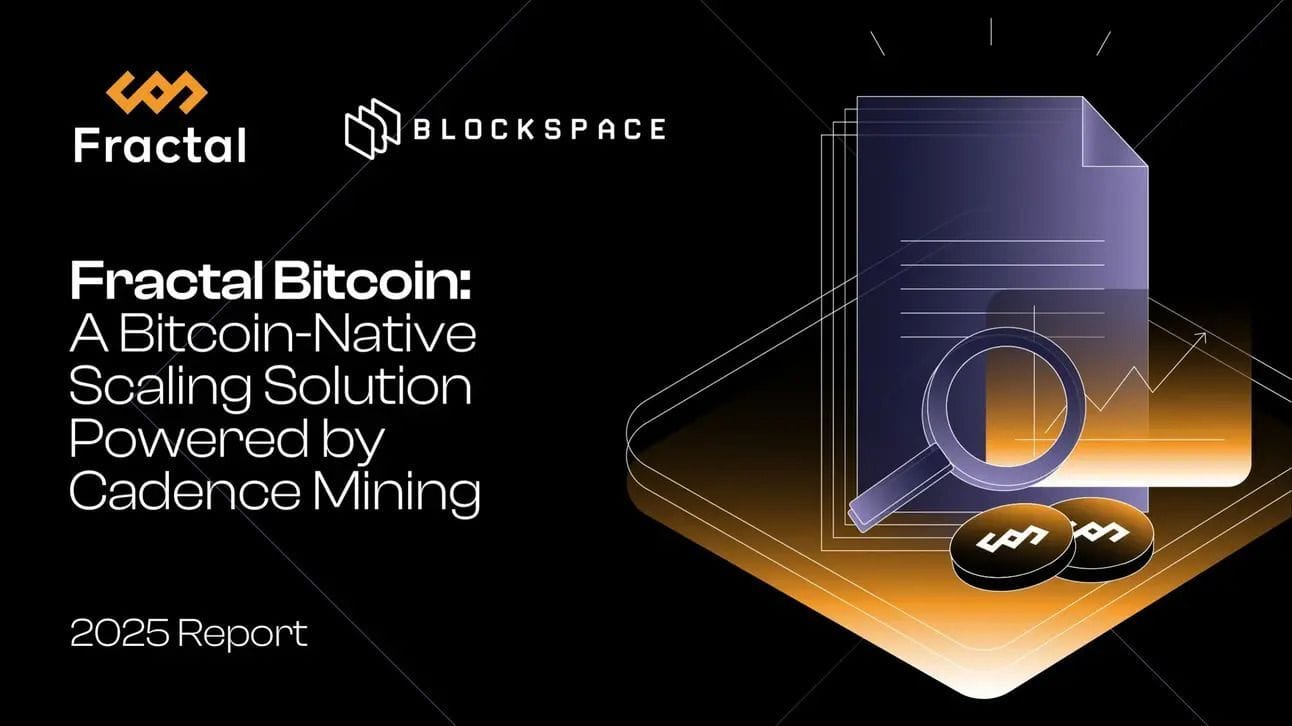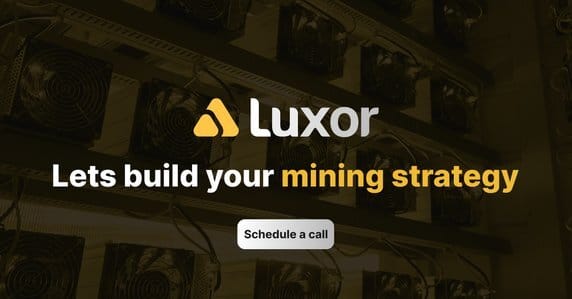- The Blockspace Newsletter
- Posts
- Why you should pay attention to BitVM again
Why you should pay attention to BitVM again
It's complicated math, but there's plenty of promise.

Like our content? Let us know by replying with your favorite recent read!
Tired of our content? Click here to unsubscribe.
Presented by
Fractal Bitcoin
Blockspace just released a new report overviewing the Fractal Bitcoin ecosystem! Check out the ad below for a link to download and join our X Spaces at 8 pm ET!
Market Opens
BTC $109K 0% GOLD $3,305 0% MSTR $396 0% COIN $354 0% | MARA $17.52 4% CLSK $11.60 2.4% RIOT $11.57 0% CORZ $14.02 5.4% |
Is Bitcoin’s most active scaling solution already here?
Fractal’s rapid hashrate growth and transaction growth suggest it might be.
A new report by Blockspace Media breaks down Fractal Bitcoin, the chain that’s quietly achieved:
🔸 ~80%+ of Bitcoin’s hashrate via merged mining
🔸 11 M+ daily transactions (comparable to Solana & Base)
Powered by Cadence Mining, a novel hybrid block production model, and seamless onboarding via UniSat, Fractal is emerging as Bitcoin’s most used innovation layer.
Why you should be paying attention to BitVM
We don’t blame you if you haven’t been following the BitVM saga. It’s difficult to explain and there have been multiple evolutions of BitVM to-date.
Robin Linus first introduced the concept in an October 2023 whitepaper. It was immediately greeted with much fanfare as a way to add Ethereum-esque smart contract capabilities to Bitcoin, and it attracted oodles of capital. Since the whitepaper was published, investors have poured over $30 million into the BitVM ecosystem into companies such as Citrea, Alpen Labs, BOB, and BitLayer.
A lot has happened since the first whitepaper. In the beginning, building anything with BitVM was complex and likely unviable. Recently we’ve seen immense improvements and solutions to some previously impractical workarounds that are making us think that BitVM might actually be all it’s cracked up to be.
Let’s walk through what happened over the past 2 years, the previous development hurdles, and why the latest breakthroughs in BitVM are so promising.
Note: Development on BitVM is ongoing. Case in point, while we were drafting this article, Alpen’s Liam Eagen discovered an issue with one of the latest BitVM schemes. We’re still wrapping our heads around it, but that just goes to show that the BitVM landscape is constantly shifting.
Genesis: The BitVM whitepaper
In the fall of 2023, Robin Linus surprised the world when he published the BitVM whitepaper with the tagline “Compute Anything on Bitcoin.”
At a high level, BitVM describes a way to compute very basic operations on Bitcoin. To be more precise, you can verify that certain operations have been computed. Think of it like a chess game where 2 players can play a game off-chain but then we can verify on-chain that the game was played and the right person won. If the “wrong” person says they won, the true winner can challenge that claim and resolve it on-chain using BitVM.
It’s a simple concept but has big implications. Bitcoin can now theoretically do some of the same things as smart contract chains like Ethereum without requiring any changes. Granted, we’re still constrained by things like Bitcoin’s block size and block time, and the BitVM scheme is much less efficient than if you were trying to do the same thing on another chain.
To clarify, BitVM is a scheme that can be used to build many things (you could actually play chess!) but the entirety of research and investment have gone toward building bridges for Bitcoin L2s such as Citrea and Alpen Labs’ Bitcoin rollups. Further, actually building those bridges initially proved more difficult than some realized…
What is a bridge? A bridge allows users to transfer BTC, tokens, and data between two networks (e.g., Bitcoin L1 and an L2). Bridges can take many forms depending on the crypto network, but they generally have an operator or set of operators who run the bridge and require users to make some basic counterparty trust assumptions.
BitVM bridges are easier said than done
Once the dust cleared from the whitepaper investor frenzy, it became clear that actually building a bridge with BitVM was more challenging than anticipated. Some demos from ZeroSync and Citrea proved that the bridges actually worked in the wild, but they also have drawbacks. For example, it could take weeks to resolve disputes, which is terrible for user experience.
Not only that, but the cost to undergo the dispute process could be significant for all parties (especially the one making the dispute) – we’re talking hundreds, thousands of blocks and transactions. This is because the dispute has to prove each off-chain condition (tapleaf circuits) and there could be thousands of conditions. This process creates an untenable user experience; who’s going to pony up potentially tens of thousands in fees and wait weeks for the dispute to resolve?
The dispute resolution was later reduced significantly with BitVM2 (see below), but there was another issue that still needed addressing: the Liquidity problem.
Built for Miners. Backed by Experts.
From ASIC sourcing to revenue hedging, Luxor helps miners operate smarter and scale faster. Talk to our team to explore strategies tailored to your site, size, and goals.
News From Blockspace
Want to get these headlines in real time? Join our Telegram group!
CoreWeave announces acquisition deal for Core Scientific
AI neocloud company CoreWeave (CRWV) announced this Monday that it will acquire Core Scientific (CORZ) in an all-stock deal valued at approximately $9 billion. The transaction, based on a fixed exchange ratio of 0.1235 CoreWeave shares per Core Scientific share, will give CoreWeave control of roughly 1.3 GW of power capacity. — link
Bitcoin ETFs see $1.04 billion in net inflows last week: Coinshares
Bitcoin spot ETFs broke $1.04 billion in inflows last week, the 12th straight week of inflows for the financial product. — link
Strategy launches $4.2 billion STRD ATM program, books $14 billion in unrealized profits
Strategy (MSTR) has unveiled a new $4.2 billion at-the-market (ATM) offering program for its 10.00% Series A Perpetual Stride Preferred Stock (STRD), the third and most junior preferred stock Strategy has issued. — link
Blockspace Podcasts
On the latest Writer’s Room, Colin and Charlie dive into the Nakamoto Project's 2025 survey revealing what the average American really thinks about Bitcoin. From surprising ownership demographics to political shifts and moral foundations, this data challenges everything you think you know about who owns Bitcoin and why.
On the latest Mining Pod, Colin and Will break down CoreWeave's meteoric rise to a $75+ billion valuation and why Bitcoin miners like Core Scientific, Galaxy Digital, and Applied Digital are all racing to partner with AI cloud providers.

Where we drop fun topics with nothing to do with Bitcoin.
On this day in 1943, Operation Husky in World War Two begins. The invasion of Sicily lasts one month, one week, and one day and kicks off the allied assault on Italy, which culminates in the ouster of Italian dictator Benito Mussolini. Operation Husky marks the first large-scale operation by U.S. forces into continental Europe.
-CBS, CMH


Reply